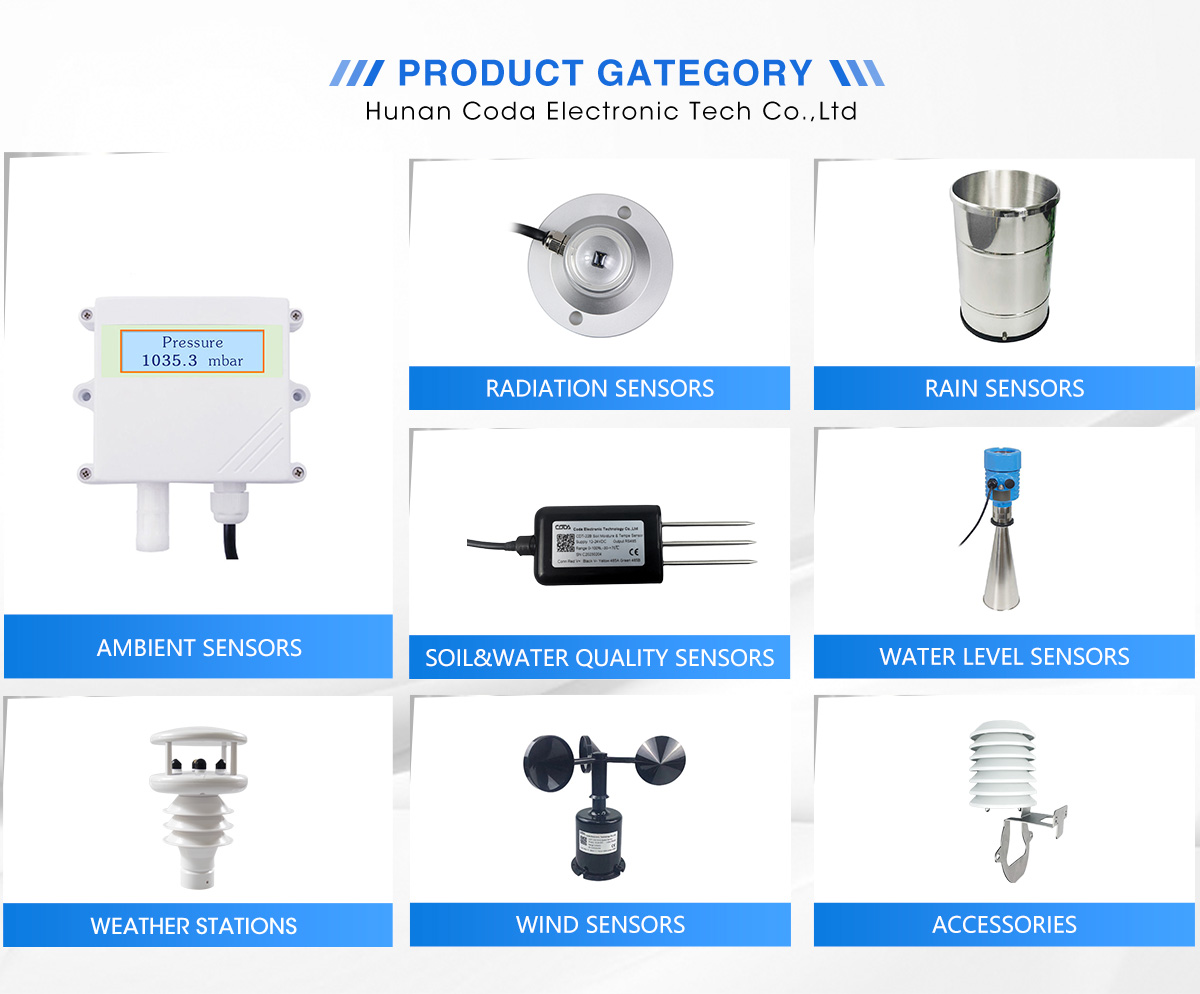Introduction:
Wind monitoring plays a pivotal role in industries ranging from renewable energy to agriculture and environmental monitoring. With advancements in sensor technology, businesses can now access more accurate and real-time wind data than ever before. In this article, we will explore two key innovations in wind monitoring: Meteorological Wind Sensors and Remote Wind Monitoring Sensors. These technologies offer precise, reliable, and efficient ways to track wind conditions and empower industries to make informed decisions.
Meteorological wind sensors are essential instruments designed to measure various atmospheric conditions, including wind speed and direction. These sensors provide crucial data for meteorologists, environmental scientists, and industries that rely on wind conditions for their operations.
The most common types of meteorological wind sensors include:
Anemometers: Devices that measure wind speed.
Wind Vanes: Instruments that track the direction of wind flow.
Combined Wind Sensors: These sensors combine both anemometers and wind vanes for comprehensive wind monitoring.
Applications of Meteorological Wind Sensors:
Renewable Energy:
Wind speed and direction data are essential for optimizing wind turbine performance. Meteorological wind sensors help determine the best locations for wind farms, maximizing energy generation.
Agriculture:
Wind sensors help farmers monitor weather conditions and make better decisions regarding irrigation, pesticide application, and planting times.
Environmental Monitoring:
Meteorological wind sensors play a significant role in tracking pollutants, understanding weather patterns, and protecting ecosystems.
Aviation and Marine Industries:
Accurate wind data is critical for flight safety and maritime operations, where weather conditions can greatly impact navigation.
Remote wind monitoring sensors improve wind tracking. They allow data collection without needing manual help. These sensors can send real-time wind data to a central system. This helps businesses and industries monitor wind conditions from anywhere.
Key Features of Remote Wind Monitoring Sensors:
Real-Time Data Collection:
Data is continuously collected and transmitted to a cloud-based platform, enabling instant access to wind conditions.
Remote Accessibility:
These sensors can be placed in remote or hard-to-reach locations, ideal for areas with limited infrastructure.
Automated Reporting:
Remote wind monitoring sensors can create automated reports. This helps businesses track long-term trends and make decisions based on data.
Energy Efficiency:
Some remote wind sensor models use low power. This makes them good for off-grid use.
Applications of Remote Wind Monitoring Sensors:
Wind Energy Industry:
Remote wind sensors are crucial for wind turbine monitoring. They can assess wind conditions in real-time, ensuring optimal performance of turbines in remote locations.
Disaster Management:
Remote wind sensors can be deployed in areas prone to severe weather conditions, such as hurricanes or tornadoes. The data collected can help authorities issue timely warnings and evacuate communities before dangerous conditions develop.
Agricultural Monitoring:
Farmers can use remote wind sensors with IoT systems. This helps them monitor wind patterns, temperature, and humidity. As a result, they can manage their crops more accurately.
Wildlife and Environmental Conservation:
Remote monitoring systems can be used in conservation efforts, tracking wind conditions and preventing potential disruptions to wildlife habitats.

Precision and Reliability:
Weather and remote wind sensors provide highly precise information. This helps businesses and researchers trust their measurements for important decisions.
Cost-Effective Solutions:
Remote monitoring sensors eliminate the need for manual data collection, reducing labor costs and improving overall efficiency.
Data Accessibility:
With cloud-based connectivity, businesses can access wind data from anywhere. This helps them make informed decisions quickly.
Enhanced Operational Efficiency:
Remote wind sensors can monitor conditions in real-time. This helps industries like wind energy, agriculture, and disaster management. They can improve efficiency, lower risks, and increase safety.
Industries are using automation and data to make decisions. Meteorological Wind Sensors and Remote Wind Monitoring Sensors are important for success. If your goal is to enhance wind power, safeguard nature, or advance agriculture, these technologies can assist. They offer the precision, accessibility, and efficiency needed to succeed in today’s changing world.
By leveraging wind monitoring sensors, businesses can gain a competitive edge, reduce operational costs, and ultimately drive innovation within their respective industries.
Are you ready to enhance your wind monitoring capabilities? Contact us today to find out how Meteorological Wind Sensors and Remote Wind Monitoring Sensors can improve your operations.
Discover how real-time weather station data impr
Discover how Automatic Weather Stations (AWS) ar
Discover how CODA gas sensors are the invisible
Contact: Molly
Phone: +86-17775769236
Tel: 86-0731-85117089
Email: molly@codasensor.com
Add: Building S5, Aux Square, Yuelu District, Changsha City, Hunan Province, China
We chat